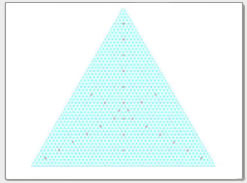
Surface tension is the elastic tendency of a fluid surface to acquire a minimum surface area. Although there have been reports on other LNC physical properties, such as elasticity, no study on the ability of LNCs to decrease surface tension has been performed to date. Physical properties, such as particle size and zeta potential, and biological properties of the LNCs have extensively been studied since 2002. The advantages of LNCs include small particle size (20–100 nm), good physical stability (18 months) and manufacturability via a phase inversion temperature method, which is a low energy, organic solvent-free process. LNCs are carriers for various administration routes, including pulmonary, intravenous, oral and local delivery. Recently, interest in the use LNCs as carriers for hydrophilic compounds (e.g., polymyxin B, calcitonin and antimicrobial peptides) using adsorption processes has been developed. Numerous active ingredients, mainly drugs with lipophilic properties, have already been incorporated into LNCs, including fluticasone propionate, essential oils: eugenol, carvacrol and trans-cinnamaldehyde, paclitaxel and ibuprofen. All above-mentioned LNC components are approved by the FDA for oral, topical and parenteral administration. LNCs contain an oily core composed of medium chain triglycerides surrounded by a surfactant shell made of a PEGylated surfactant and optionally lecithin or other co-surfactants. Lipid nanocapsules (LNCs) are biomimetic nanocarriers with a structure that is a hybrid between polymeric nanoparticles and liposomes. In conclusion, the surfactant-like properties of the LNCs offer new possibilities for medical and pharmaceutical applications. The CMC/SIC values measured by the Wilhelmy plate method were higher than those obtained using drop tensiometry because of the longer duration of the tensiometry measurement. The SIC of the LNC formulations depended on the mass mixing ratio of the MHS/triglycerides but not on the presence of lecithin. LNCs have exhibited a saturated interfacial concentration (SIC) that was 10-fold higher than the critical micellar concentration (CMC) of MHS or the SIC of binary and ternary mixtures of LNC ingredients. LNCs exhibit a lower limiting surface tension compared to MHS (34.8–35.0 mN/m and 37.7–38.8 mN/m, respectively), as confirmed by both drop tensiometry and the Wilhelmy plate method. The LNCs’ properties, such as size and zeta potential, depend on the composition. LNCs with diameters ranging from 30 to 100 nm were successfully obtained using a phase inversion technique. Therefore, the aim of this paper was to investigate the capability of the LNCs to decrease surface tension using two techniques: drop tensiometry and the Wilhelmy plate method. Moreover, the components of LNCs, macrogol 15 hydroxystearate (MHS) and lecithin, are known for their surface active properties. Similar to surface active compounds, LNCs contain both hydrophilic and hydrophobic parts in their structure.

Examination of the growth zoning of sample 2 reveals a complex compositional zoning – indication for growth under polymetamorphic conditions.Lipid nanocapsules (LNCs) are biomimetic nanocarriers used for the encapsulation of a broad variety of active ingredients.

Retrograde features were observed only in the garnet rims. The zoning paths of all studied garnets, except sample 2, are of the normal type characterizing a prograde genesis. The oxide ratio (FeO+MgO)/(CaO+MnO) and the unit cell parameter of the garnets show that the samples from Zhalti Chal Formation formed in more variable P-T conditions of metamorphism compared to the samples from Ustrem Formation. The values of the unit cell parameter of the garnets from Zhalti Chal Formation range from 11.544 to 11.597Å while those from the Ustrem Formation – from 11.552 to 11.583Å. For the samples from Ustrem Formation the molar percentages of almandine are in the range 72.67–74.76, of grossular – 9.83–14.46, of pyrope – 8.02–10.37 and of spessartine – 3.20–6.44. For the samples from Zhalti Chal Formation the molar percentages of almandine are in the range 70.23–78.96, of grossular – 4.24– 16.53, of pyrope – 5.01–13.97 and of spessartine – 3.56–11.37. To elucidate the garnet forming processes and their relation to the metamor-phism in the rim of the Sakar pluton (SE Bulgaria) the crystal chemical features of garnets (chemical composition, admixtures, unit cell parameter and compositional zoning) in metamorphic rocks of Zhalti Chal and Ustrem Formations are studied.


 0 kommentar(er)
0 kommentar(er)
